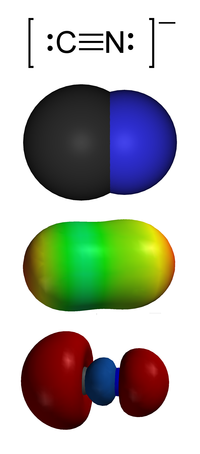
Photo from wikipedia
Ru-ZnO-g-C3N4 nanocomposite was made using a straightforward ultrasonication method and evaluated for its potential to remove Cd ions from aqueous environments. X-ray diffraction analysis confirms composite production with an average… Click to show full abstract
Ru-ZnO-g-C3N4 nanocomposite was made using a straightforward ultrasonication method and evaluated for its potential to remove Cd ions from aqueous environments. X-ray diffraction analysis confirms composite production with an average crystalline size of 6.61 nm, while transmission electron microscopy results indicate nanosheet-like nanomaterials with uniform elements distribution. Measurements of N2 adsorption–desorption reveal the creation of a mesoporous structure with a BET surface area of approximately 257 m2/g. Fourier converted infrared reveals vibrational modes for O-H, amino groups, triazine, and Ru-ZnO. In contrast, X-ray photoelectron spectroscopy investigation reveals the presence of the elements Ru, Zn, O, N, and C. Ru-ZnO-g-C3N4 nanocomposite has remarkable adsorption efficiency for aqueous Cd ions, achieving 475.5 mg/g in 18 min. This study reveals that the Ru-ZnO-g-C3N4 nanocomposite may be used as an effective and reusable adsorbent for removing Cd ions during wastewater treatment and, possibly, for eliminating other toxic metal ions.
Journal Title: Inorganics
Year Published: 2023
Link to full text (if available)
Share on Social Media: Sign Up to like & get
recommendations!